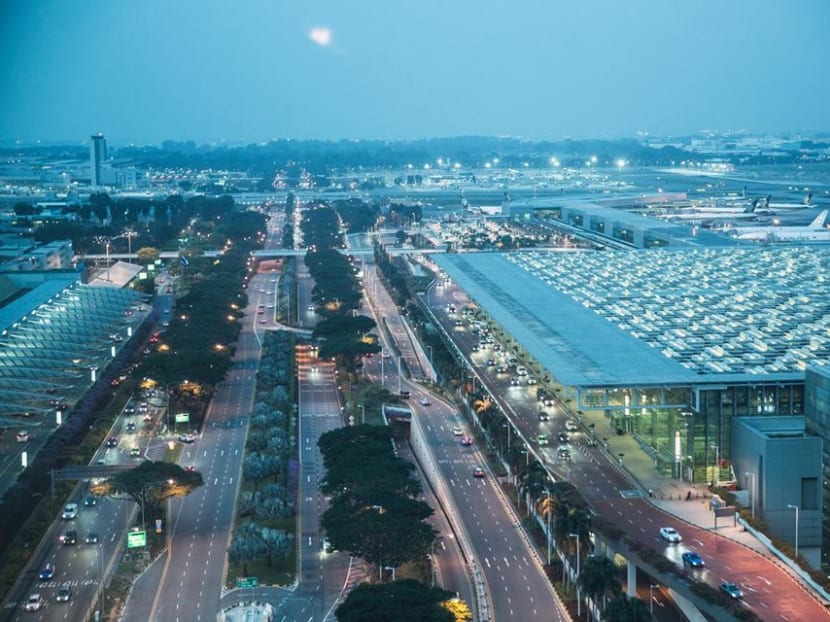What can Singapore do to counter rogue drones and airport incursions?
The rapid proliferation of consumer drones poses a serious threat to commercial aviation. This point was driven home when several unauthorised drones intruded into restricted airspace around Singapore’s Changi Airport and disrupted its operation for about 10 hours on June 18 and 19.

The penalties against errant drone users in Singapore are lower than some other countries and may not be harsh enough to deter such offenders, the authors say.
The rapid proliferation of consumer drones poses a serious threat to commercial aviation. This point was driven home when several unauthorised drones intruded into restricted airspace around Singapore’s Changi Airport and disrupted its operation for about 10 hours on June 18 and 19.
This is believed to be the most serious such incident yet in Singapore, with the delay of 37 flights and the intermittent closure of one of two runways.
Around the world, rogue consumer drones are straying into the restricted airspace around airports with greater frequency. While no fatal incident has happened yet, it is worth noting that consumer drones have been used for various malicious purposes.
For example, they have been used to smuggle contraband into prisons in the United States and even retrofitted to carry explosives for an assassination in Venezuela.
Although we have not seen a fatal incident, it is not difficult to imagine how the deliberate misuse of consumer drones could have serious consequences.
PROLIFERATION OF DRONE TECHNOLOGY
Drone technology has come a long way from being used almost exclusively by the military to being just another consumer product.
In fact, when the word “drone” was brought up in the early 2000s, the Predator — an eight-meter-long unmanned aerial vehicle flown by the United States military — typically came to mind.
Armed with guided missiles, the Predator was so effective a killing machine that it was deployed globally to eliminate enemies of the US.
Today though, consumer drones are flown by civilians for a variety of reasons, from recreation to research to parcel delivery. Priced at no more than a few hundred dollars for some low-end models, drones can now be readily purchased by the public.
Meanwhile, improvements in communications and navigation technology have also made them easier to fly. High-tech features like Global Positioning System make drone-flying easier and safer while a powerful receiver lets them fly high and far.
With these enhancements, almost anyone can operate a drone.
DEALING WITH ROGUE DRONES
This “democratisation” of drones — taking the technology out of military control and putting it into the hands of private citizens — has also created new security challenges, one of which is the threat posed by errant consumer drones to commercial aviation.
Before the incident at Changi, consumer drones had already delayed flights in the US, China and the United Kingdom.
What is most troubling about some of these incidents is that drones have flown very close to commercial airliners when they were airborne.
Often made of various hard materials and with batteries that can explode, a drone crashing into the engine of a passenger aircraft in mid-air can cause it to lose control.
So what can be done to stop these rogue consumer drones?
First, there is an assortment of counter-drone systems in the market now and they can be broadly categorised into kinetic and non-kinetic systems.
Kinetic systems are essentially ballistic weapons that fire a projectile at the errant drone to knock it out of the sky.
The downside with such systems is that collateral damage is hard to avoid, especially when they are used in an urban environment.
This is why interceptor drones that can deploy a net to snag errant drones are also available. Even trained predatory birds have been used to snatch drones out of the sky to reduce collateral damage.
Non-kinetic systems, on the other hand, typically work by blasting electronic signals from a jammer to disrupt the radio frequencies of errant drones. Once hit by a jammer, a drone would either land on its own or return to its operator, thus reducing the risk of collateral damage.
However, the drawback of these systems is that they can also disrupt other electronic devices nearby — a situation that is less than ideal, especially in and around an airport.
Singapore can learn from other countries on how they regulate the technology.
For example in Japan, the flying of consumer drones at night is prohibited. One reason is that operators have been known to spray paint their drones black and tape over their navigation lights to evade detection.
In night-time conditions, these improvised drones are practically invisible to the naked eye from a distance.
Keeping in mind that the intrusion into Changi’s airspace occurred between 11pm on June 18 and 9am on June 19, restricting night-flying will make it more difficult for drone operators who plan to use the cover of darkness to mask their unlawful activities.
Another example is the US where operators are required by law to register their drones. Registration is mandatory, regardless of the drone’s weight.
No different from cars, all drones must carry registration numbers. Such a measure can facilitate and expedite owner identification and criminal investigation in the event of a violation.
For instance, when an errant drone has been shot down by a counter-drone system, investigators will be able to trace it back to its owner simply with its registration number.
Stiffer penalties for errant drone operators may also be needed. In Singapore, those found guilty of operating a drone within 5km of airports or military bases or at attitudes above 61 m without a permit face a S$20,000 fine and a one-year prison sentence.
But in the UK, such an offence carries an unlimited fine and a five-year sentence. In the US, it carries a US$250,000 (S$338,500) fine and a three-year sentence. The penalties in Singapore are clearly lower and hence may not be harsh enough to deter errant drone operators here.
THINKING AHEAD
The threat posed by rogue drones to commercial aviation is very complex and there is no single solution that is perfect. Because of that, what is needed is a combination of sophisticated countermeasures and tough regulations.
This may appear to be an overkill for a consumer product. But drone technology is evolving rapidly, and measures introduced today to deal with rogue drones can quickly become obsolete if they are not sufficiently bold or forward-looking.
Considering the thousands of aircraft flying in and out of Changi every year, we should not wait for a fatal incident or more severe disruptions before getting tough.
ABOUT THE AUTHORS:
Tan Teck Boon is Research Fellow and Coordinator of the Science and Technology Studies Programme (STSP), S. Rajaratnam School of International Studies, Nanyang Technological University. Nandhakumar Gunasekaran is Senior Analyst in the STSP.









